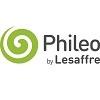
Content sponsored by:
Phileo by Lesaffre
Actisaf helps maintain performance on spring grazing for High-Genetic merit Herd
Published: April 19, 2018
Source : Phileo Lessafre

Many dairy herds will see milk butterfat levels drop when their herd is grazing lush, spring grass – something that is often accompanied by dungs becoming loose.
But back in 2016, dairy farmer, Tim Fitzgerald, not only noticed loose dung and reduced butterfats in his herd but also observed higher levels of lameness. This meant that he was interested when a solution was suggested for the 2017 grazing season.
Tim, from Ballyroan, near Abbeyleix in Co. Laois, runs around 75 Holstein Friesian cows, with the herd being in the top three per cent in Ireland when ranked on EBI. Cows calve in the spring and Tim follows a typical rotational grazing approach, typically getting cows out to grass by day as soon as they calve in February thanks to the dry, light land he farms on, with cows out full-time by March. As the season progresses, Tim shuts up paddocks that are growing on, taking high quality silage from them, which is then used at each end of the season to feed cows.
Tim, from Ballyroan, near Abbeyleix in Co. Laois, runs around 75 Holstein Friesian cows, with the herd being in the top three per cent in Ireland when ranked on EBI. Cows calve in the spring and Tim follows a typical rotational grazing approach, typically getting cows out to grass by day as soon as they calve in February thanks to the dry, light land he farms on, with cows out full-time by March. As the season progresses, Tim shuts up paddocks that are growing on, taking high quality silage from them, which is then used at each end of the season to feed cows.
“In 2016 the cows performed well, producing 570kg of milk solids/ cow with good fertility, but we did notice more lameness and tender feet than we’d normally see in the spring, and butterfat levels were slightly depressed,” Tim explained.
“I also noticed that cows were loose. I discussed this with Pat Delaney and David Lawrence from Brett Brothers, who supply my feed, and they suggested adding Actisaf live yeast to our feed.” Tim is a firm believer in maximising output from grazing, and measures grass growth every week. He is also committed to ensuring that his pastures deliver, reseeding around 10 per cent of the farm every year with high yielding, high sugar grass mixes for optimum performance.
“I want to get the best output I can from grazed grass, whilst also benefiting from the genetic potential of my cows,” Tim said. “As such, we feed a small amount of compound through the parlour throughout the grazing season. There is a perception among some people that it isn’t right to feed meal through the grazing season, but we certainly see a return from doing so.”
Through 2017 he fed 3kg/head/day of Brett’s feed, with Actisaf being included to support rumen function and help control acidosis.
“We really noticed the difference with the Actisaf in the feed,” Tim explained. “Milk solids were maintained throughout the spring period and dung was much firmer. Cows peaked at 32.5 litres/day at 2.5kg milk solids/day, with around 26 litres of this coming from grazed grass. We are also aiming for 600kg milk solids/cow this year.”
Source
Phileo LessafreRelated topics:
Recommend
Comment
Share

Would you like to discuss another topic? Create a new post to engage with experts in the community.


